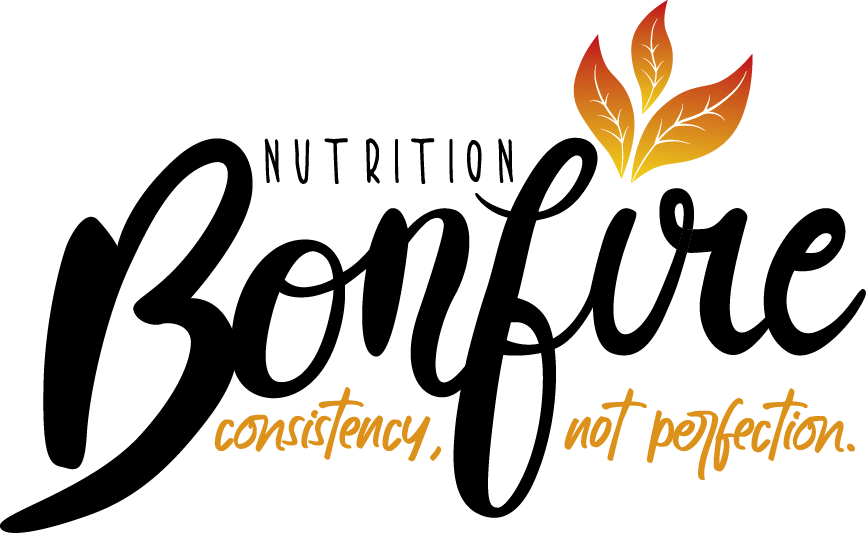How to freeze food properly?
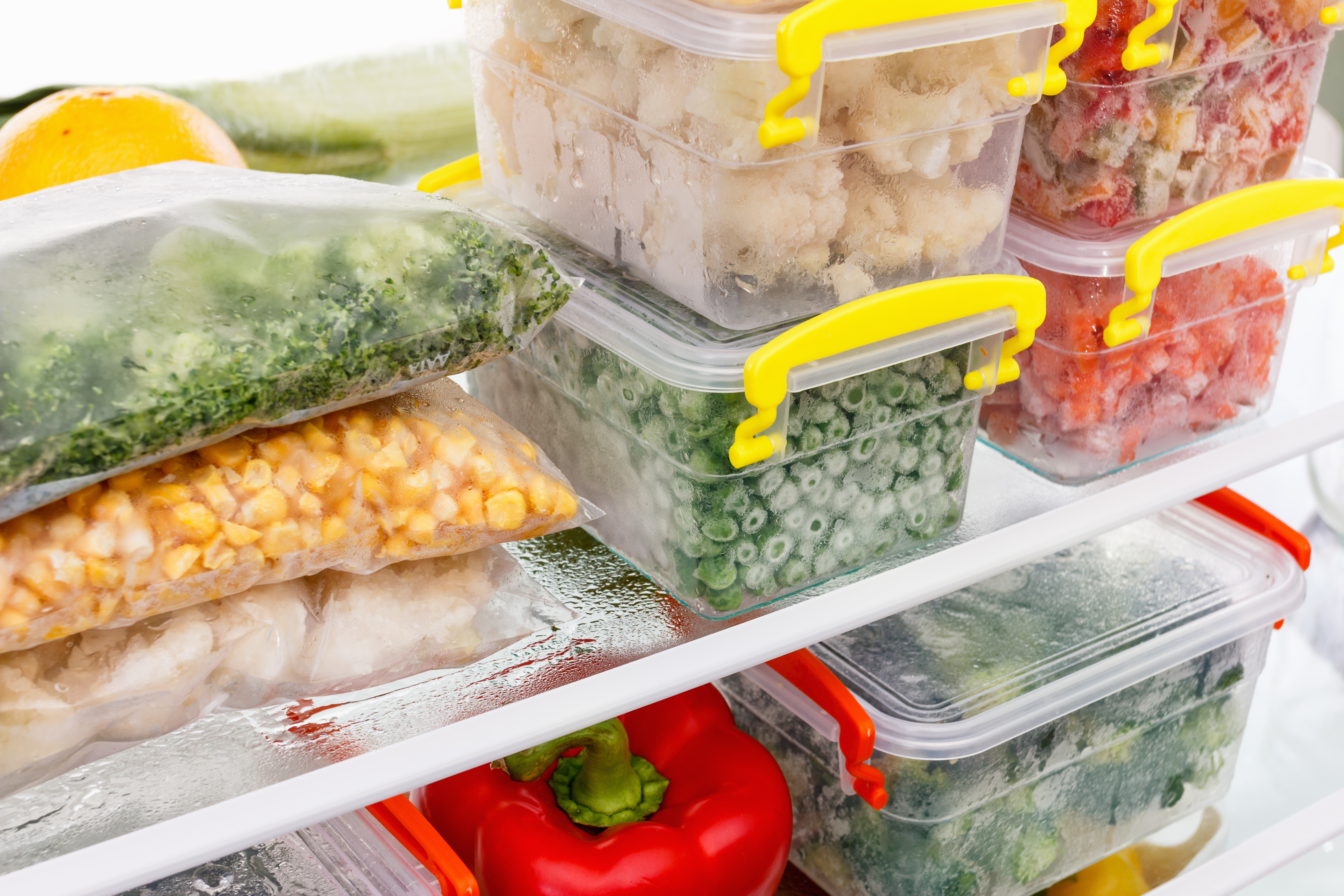
We are cleaning the crap out of our homes, or we will be. This is the way it is right now. With most of us in social isolation and working from home, it is inevitable that we will be doing some tidying up.
One of the most popular places to undergo this process is the kitchen, and rightfully so. Whether you love cooking or your kitchen gets neglected, chances are you will be cleaning cabinets, or at the very least, checking what foods you have, what needs to go and what needs to stay.
This is where things can get confusing, especially because sometimes we can’t remember when we bought a certain item, the best before date has been erased from the package with use, or because we bought a certain thing in bulk and we forgot to write down the date of purchase.
So what’s a girl to do? How can we store foods properly? Let’s start at the beginning.
Best before date
According to the Canadian Food Inspection Agency, best before dates and expiration dates are not the same. The best before date or use by date, tells us the amount of time that an unopened food product will retain its taste, nutritional value, freshness and other qualities claimed by the manufacturer. The best before date therefore, is an important detail to know when you want to buy or consume a product at its best quality point. After that date, the product’s freshness and nutritional value will start declining, not its safety.
Expiry dates
Expiry dates, on the other hand, need to be clearly specified in foods such as formulated liquid diets, meal replacements, nutritional supplements, infant formulas and food represented for use in a very low-energy diet. The Canadian Food Inspection Agency urges that the foods listed above be thrown away if they are past the expiry date.
Scared of opening your freezer? Me too!!
Oh boy, let’s be honest, when was the last time you organized your freezer? I know I haven’t truly looked at mine in a while. But this is an essential place to keep organized, especially now that we are probably storing more foods than before.
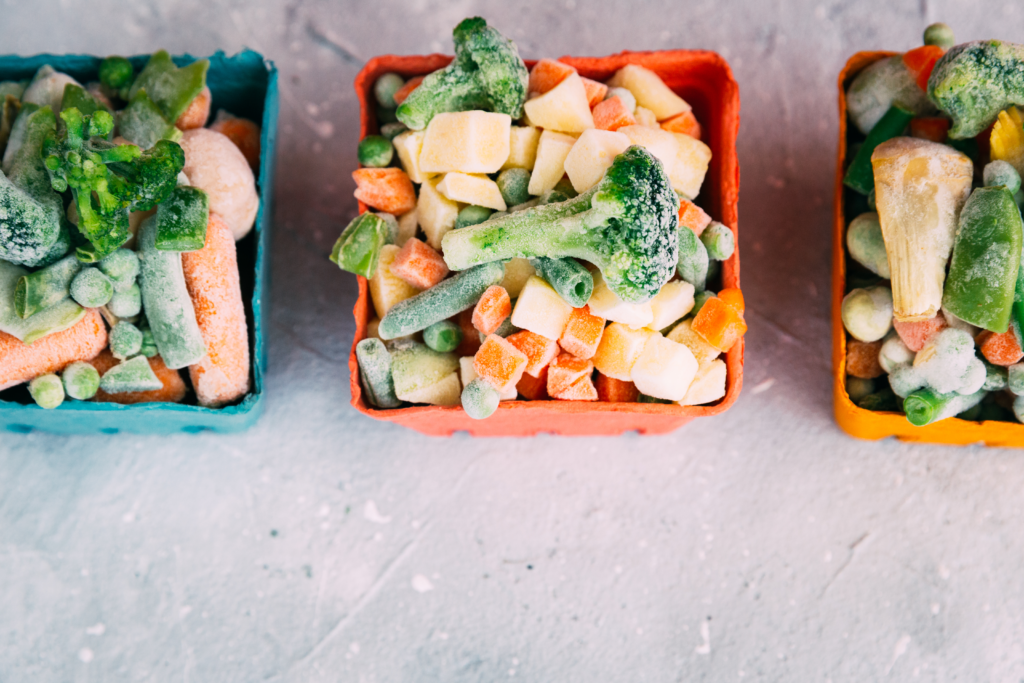
Before freezing ….
- Check that your freezer is at -18 degrees and clean.
- Make sure that all plastic or glass containers and storage bags are in good condition.
- When freezing liquids, make sure that you are leaving enough space in containers as these will expand.
- Remove any air from bags to avoid food frost.
- Make sure you are putting only cooled foods in your freezer to avoid unwanted temperature fluctuations.
- Lastly, make sure you label and date your foods for future reference.
How long to freeze your food for?
If you are planning on storing your vegetables for 6 months or more, then it is suggested to blanch your vegetables as this action stops the enzyme action that can be responsible for loss of flavour, color, and taste. Generally speaking, you should blanch your veggies in boiling water for 3- 5 minutes, draining and drying thoroughly. This step will extend the storage time up to 12 months.
When it comes to the amount of time we should have our foods frozen, there are a few suggestions out there. Most sources, which include Health Link Canada, Love food hate Waste Canada, and the Harvard Health Publishing agree on the following times:
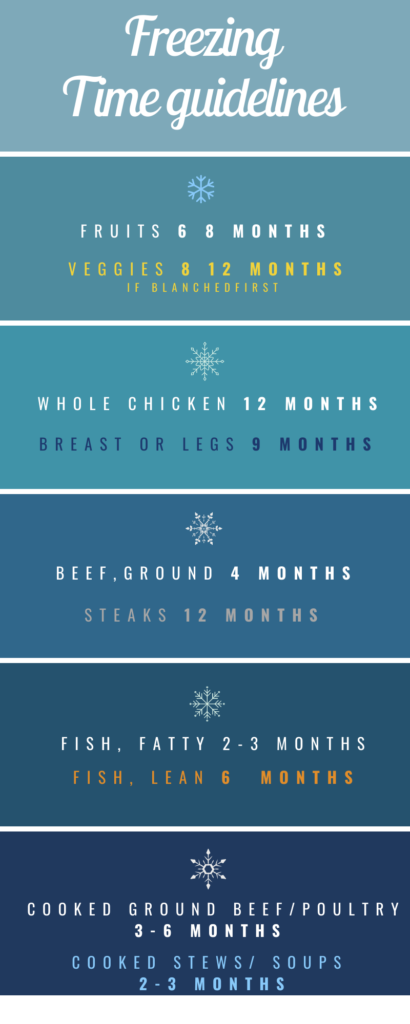
What about seeds, nuts and herbs?
I keep my chia seeds, hemp hearts and flax meal in the fridge. I always try to check the best by date, and/or label them if I bought them in bulk. I try to consume these products within 6 months or by their best by date (as a reference of their freshness), and not because the product has gone bad necessarily.
Spices and herbs can last up to 12 months on your counter, but it’s good to take notice of their color and smell. Also, it is very important to “awaken” a herb when using. Just put the desired amount in the middle of your hand and gently rub it.
You can also freeze herbs in olive oil and as a sort of pesto that you can prepare and place in an ice cube tray. Once they are solid you can transfer into reusable bags for longer storages and to avoid food frost.
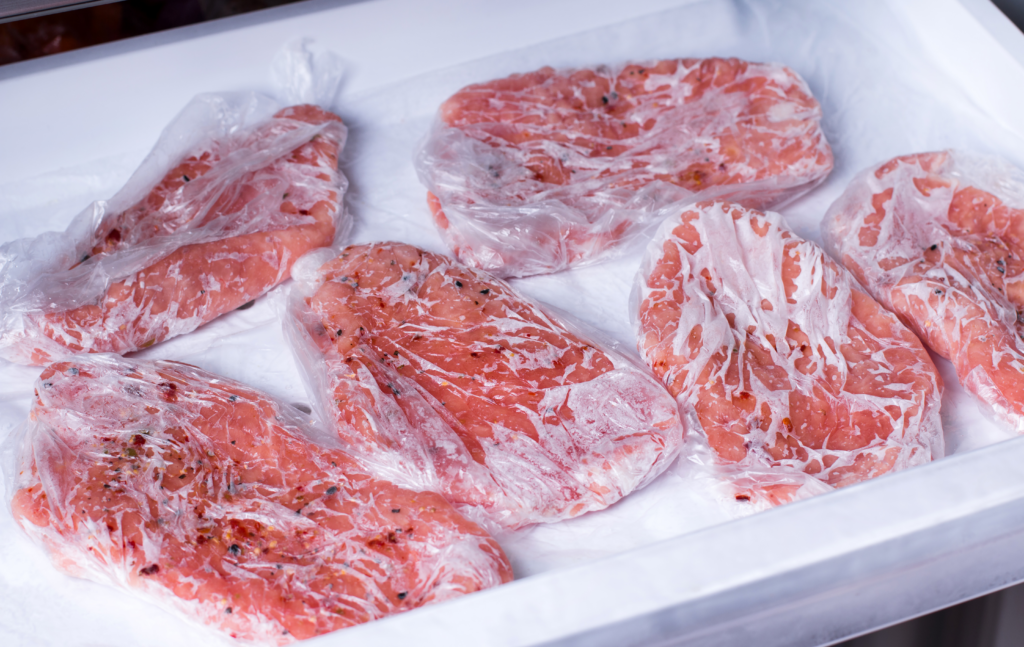
Is it safe to refreeze previously frozen food?
According to McGill’s Office for Science and Society when it comes to raw meat/poultry you should never defrost on the counter.
“Thawing should always be done in the refrigerator, not at room temperature. Remember that if you thaw at room temperature, the inside can still be frozen while the outside reaches a temperature where bacteria can multiply”
If you place your raw meat on the counter, in cold water or in the microwave you are bound to cook it immediately after thawing. Don’t put it back in the fridge or freezer.
Partially thawed food may be safely put back in the freezer as long as it has been defrosted properly, in the fridge. You do need to act promptly though, as you don’t want thawed meat to sit for too long in your fridge. According to Health Canada Services “once food has been completely defrosted, don’t re-freeze it. You can re-freeze partly defrosted food only if it still has ice crystals on its surface.”
When it comes to cooked items, don’t refreeze anything that has been sitting on the counter for over two hours. Most issues become serious when we leave food at a “danger zone” 4˚C/ 60˚C ( 40F – 120 F), as these temperatures are ideal for bacteria to thrive, which we want to avoid at all cost. Be safe, and when in doubt, throw it out.
By following these guidelines, it will help you produce less waste, store food wisely and keep you and your family safe.
